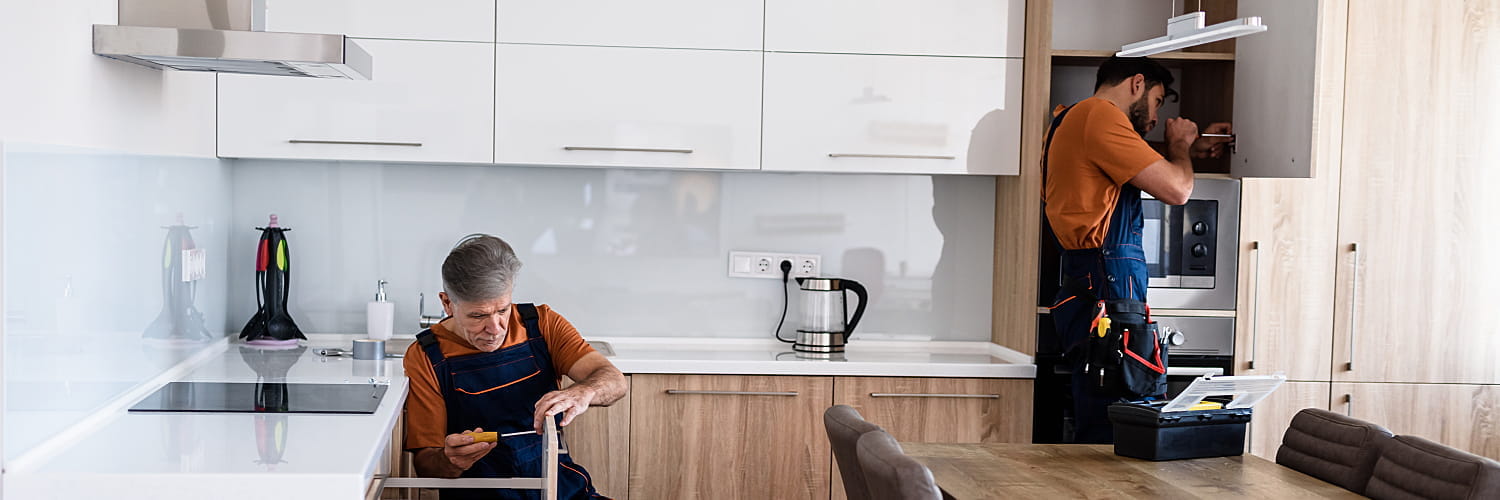Home is where the heart is, and it's important to ensure that your living space will remain safe for you as you age. The majority of preventable accidents occur in homes, according to the National Safety Council, but by making some age-friendly home improvements ahead of or early in your retirement, you can help to ensure that your house remains a home throughout your golden years.
7 Age-Friendly Home Improvements for Aging in Place
Which improvements you choose for your home will depend on your personal circumstances, your current and future health needs, your lifestyle and activity levels, and, importantly, your budget. Remember that it's best to plan ahead and plan on the safe side when it comes to making your home suitable for aging in place.
Here are seven potential improvements you might want to consider, ranging from basic DIY projects to more intensive (and expensive) renovations.
1. Declutter
One of the easiest age-friendly home improvements is simply cutting down on unnecessary household items. Having only the items you need in every room means you can place them in easy-to-reach cabinets, shelves and drawers. This reduces the possibility of injuring yourself when you're grabbing an appliance from a high cabinet or reaching deep into the bathroom closet for a spare box of Q-tips. As a bonus, this improvement is completely free and requires no special skills.
2. Install Easy-to-Grab Hardware
Traditional doorknobs, cabinet hardware and plumbing fixtures often require some sort of pinching, twisting or forcing to work. Installing lever doorknobs, wide ergonomic cabinet pulls and lever-handled faucets can make your home more livable as you age, even if you lose some dexterity.
3. Reduce Tripping Hazards
Falling-related injuries are a serious issue for older adults. According to the World Health Organization, somewhere between 28-35% of people aged 65 and over fall each year. In the main living area of your home, remove area rugs and excess furniture, and make sure that thresholds between rooms are level. In the bathroom, you could install a grab bar in the shower and add non-slip mats to both the shower floor and the bathroom floor to prevent slipping.
4. Shore Up Your Stairs
There are several easy and inexpensive improvements you can make to staircases to help you age in place. The first is to make sure you have railings on both sides of the stairs for additional support. You can also make each stair visually different so anyone with uncertain eyesight can tell where they are stepping. Making sure there is a non-slip carpet or mat in the center of each stair tread can help to differentiate each stair and provide secure, non-slippery surfaces to step on.
5. Install an Accessible Tub or Shower
Having a walk-in bathtub or a curb-less shower (with no lip to step over) can make your home more accessible, even if you struggle with mobility as you age. Installing one of these accessible tubs or showers costs $4,000 on average. You may also want a shower chair, either as a separate piece or as a built-in part of your shower or tub.
6. Make Your Kitchen Age-Friendly
An age-friendly kitchen will allow you to prepare food even if you cannot reach high cabinets or you need to sit while you cook. This can mean having counters at varying heights, easy-to-reach cabinets and appliances that can age with you. For instance, you may need a stove with dials on the front (rather than behind the burners) or a side-by-side refrigerator-freezer. Costs for these renovations can vary depending on how your kitchen is currently set up.
7. Consider a Stair Lift
If stairs become difficult or impossible to navigate, adding a stair lift can make a big difference. These items range in cost from $2,000 to $10,000, and you generally will not purchase one until you need it. If you choose to install a stair lift, you may also need to install electrical outlets at the bottom and top of the stairs and widen your staircase to accommodate the lift.
Decide Which Improvements to Prioritize for Your Home
These age-friendly home improvements can make aging in place easier, more comfortable and less hazardous. Think ahead to what your future needs might be so you can determine which improvements to prioritize for your home. Once your DIY projects or renovations are complete, you can sit back and enjoy your retirement to the fullest.


 Emily Guy Birken
Emily Guy Birken










